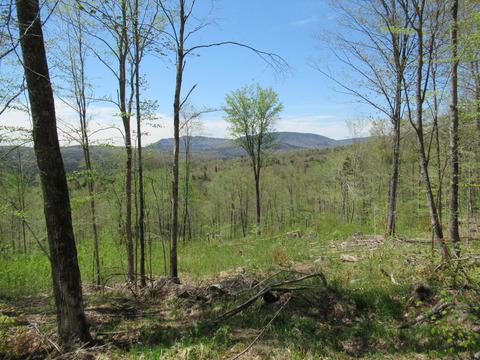当前位置:
X-MOL 学术
›
Funct. Ecol.
›
论文详情
Our official English website, www.x-mol.net, welcomes your
feedback! (Note: you will need to create a separate account there.)
Functional, temporal and spatial complementarity in mammal-fungal spore networks enhances mycorrhizal dispersal following forest harvesting
Functional Ecology ( IF 4.6 ) Pub Date : 2021-06-10 , DOI: 10.1111/1365-2435.13855 Ryan B. Stephens 1 , Serita D. Frey 1 , Anthony W. D’Amato 2 , Rebecca J. Rowe 1
中文翻译:

哺乳动物-真菌孢子网络的功能、时间和空间互补性增强了森林采伐后的菌根扩散
更新日期:2021-06-10
Functional Ecology ( IF 4.6 ) Pub Date : 2021-06-10 , DOI: 10.1111/1365-2435.13855 Ryan B. Stephens 1 , Serita D. Frey 1 , Anthony W. D’Amato 2 , Rebecca J. Rowe 1
Affiliation

|
- Animals that disperse plant or fungal propagules following forest disturbances, including timber harvests, play an important role during forest regeneration by dispersing seeds or spores from intact communities to disturbed sites. Determining how complementary or redundant animal species are as dispersers of propagules is key to understanding the stability of dispersal dynamics and informing management practices.
- Here we examine the functional, temporal and spatial components of mycorrhizal fungal spore dispersal by small mammals (rodents and shrews) following timber harvest. We tracked the interactions of seven mammal species and 34 fungal taxa composed of two mycorrhizal functional types, arbuscular mycorrhizae (AM) and ectomycorrhizae (ECM), in 11 patch cuts (0.4 ha) distributed across hardwood and mixedwood forest in the north-eastern United States. Over a 2-year period directly following harvests, we measured the relative contribution of mammal species to spore dispersal using networks that integrated mammal abundance with spore loads in scat. We also measured species-specific microhabitat associations.
- Mammals were complementary in their dispersal of AM and ECM fungal spores. However, within AM dispersal networks, mammals were redundant, with asynchrony in mammal population fluctuations among years leading to changes in the relative importance of mammal species. Comparatively, ECM fungal spore consumption and dispersal was primarily provided by one rodent species (Myodes gapperi), resulting in dispersal networks that were highly specialized. This indicates that AM spore dispersal is more robust to changes in mammal community turnover compared to ECM spore dispersal.
- Mammal species varied from having no microhabitat associations to associating with a variety of different forest structure and ground cover conditions, indicating that species play different roles from broadcasting spores widely to depositing spores in discrete locations. By preserving microhabitat characteristics that are associated with small mammals in harvested areas, particularly downed wood and patches of pre-harvest vegetation, forest managers can help maintain dispersal of mycorrhizal fungi.
中文翻译:

哺乳动物-真菌孢子网络的功能、时间和空间互补性增强了森林采伐后的菌根扩散
- 在森林受到干扰(包括木材采伐)后传播植物或真菌繁殖体的动物通过将种子或孢子从完整社区传播到受干扰的地点,在森林再生过程中发挥着重要作用。确定作为繁殖体传播者的互补或冗余动物物种的程度是了解传播动态稳定性和告知管理实践的关键。
- 在这里,我们研究了木材收获后小型哺乳动物(啮齿动物和鼩鼱)菌根真菌孢子传播的功能、时间和空间成分。我们追踪了 7 种哺乳动物和 34 种真菌类群的相互作用,这些真菌类群由两种菌根功能类型,丛枝菌根 (AM) 和外生菌根 (ECM),在分布于美国东北部硬木和混交林的 11 个斑块切割(0.4 公顷)中状态。在收获后的 2 年期间内,我们使用将哺乳动物丰度与粪便中孢子负荷相结合的网络,测量了哺乳动物物种对孢子传播的相对贡献。我们还测量了特定物种的微生境关联。
- 哺乳动物在传播 AM 和 ECM 真菌孢子方面是互补的。然而,在 AM 扩散网络中,哺乳动物是多余的,哺乳动物种群在不同年份的波动不同步,导致哺乳动物物种的相对重要性发生变化。相比之下,ECM 真菌孢子的消耗和传播主要由一种啮齿动物物种 ( Myodes gapperi ) 提供,从而形成高度专业化的传播网络。这表明,与 ECM 孢子扩散相比,AM 孢子扩散对哺乳动物群落更新的变化更加稳健。
- 哺乳动物物种从没有微生境关联到与各种不同的森林结构和地面覆盖条件相关,表明物种扮演着不同的角色,从广泛传播孢子到在离散位置沉积孢子。通过在采伐区保留与小型哺乳动物相关的微生境特征,特别是被砍伐的木材和收获前的植被斑块,森林管理者可以帮助维持菌根真菌的传播。









































 京公网安备 11010802027423号
京公网安备 11010802027423号